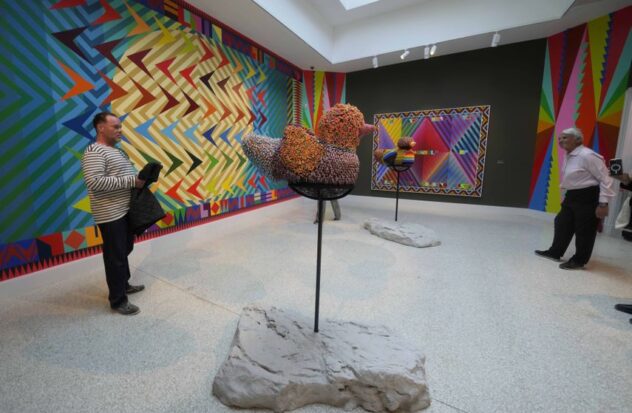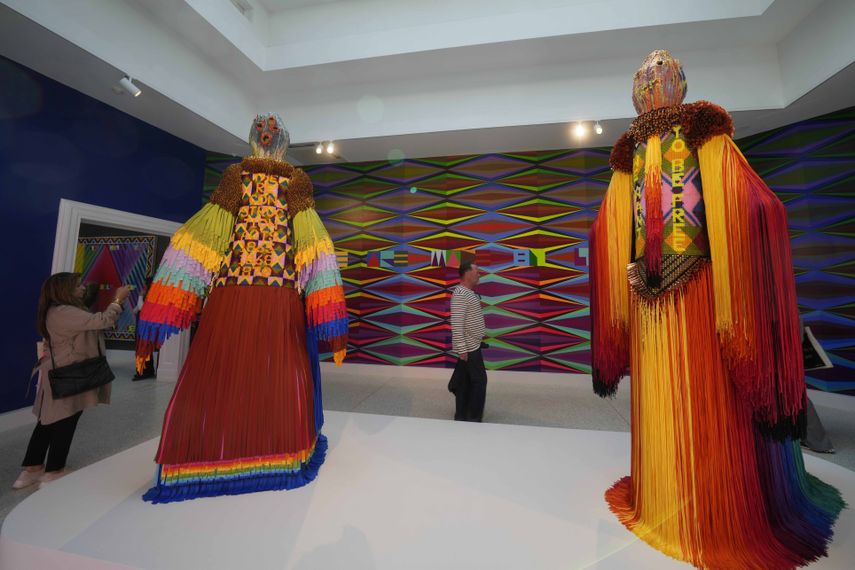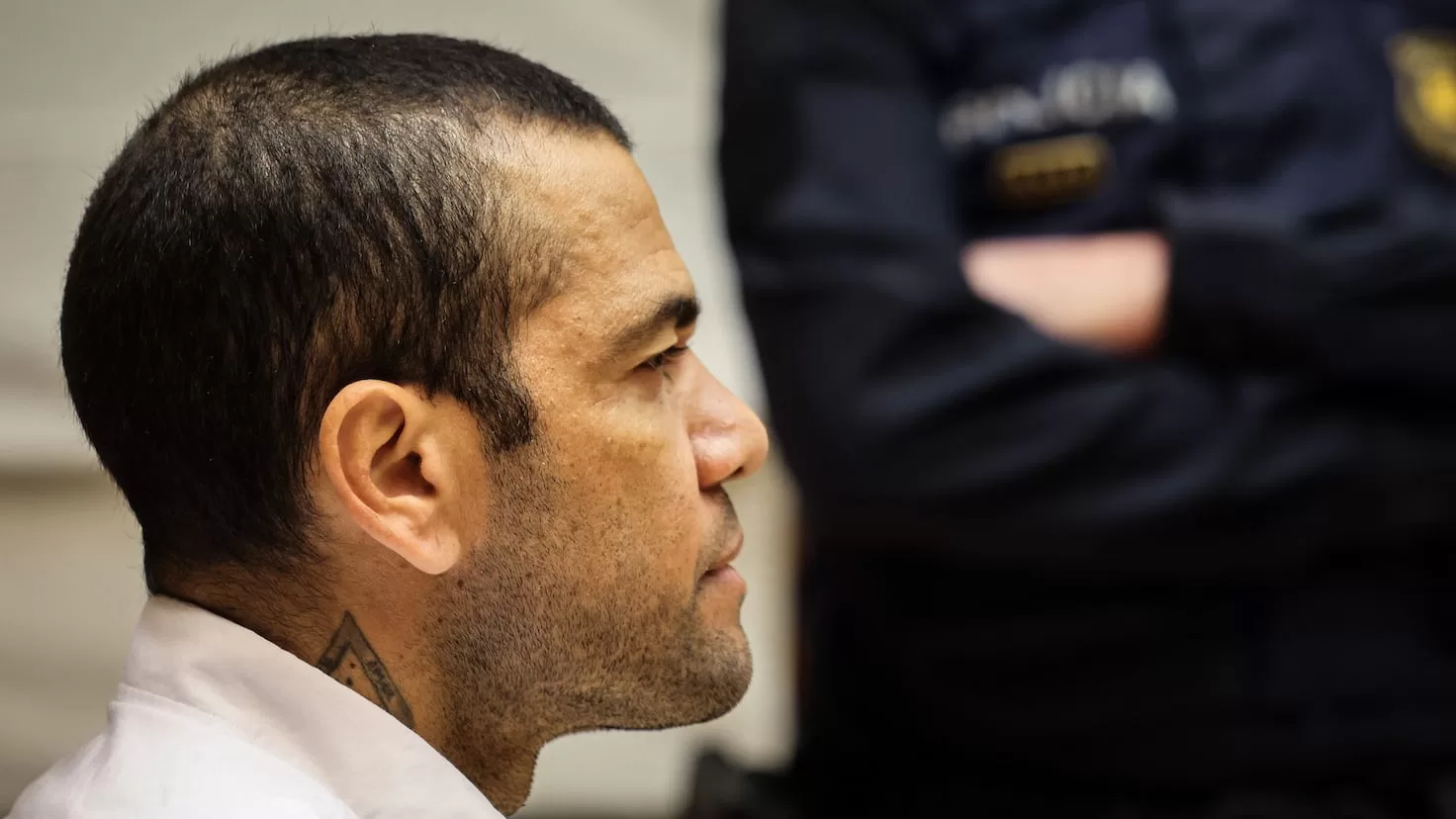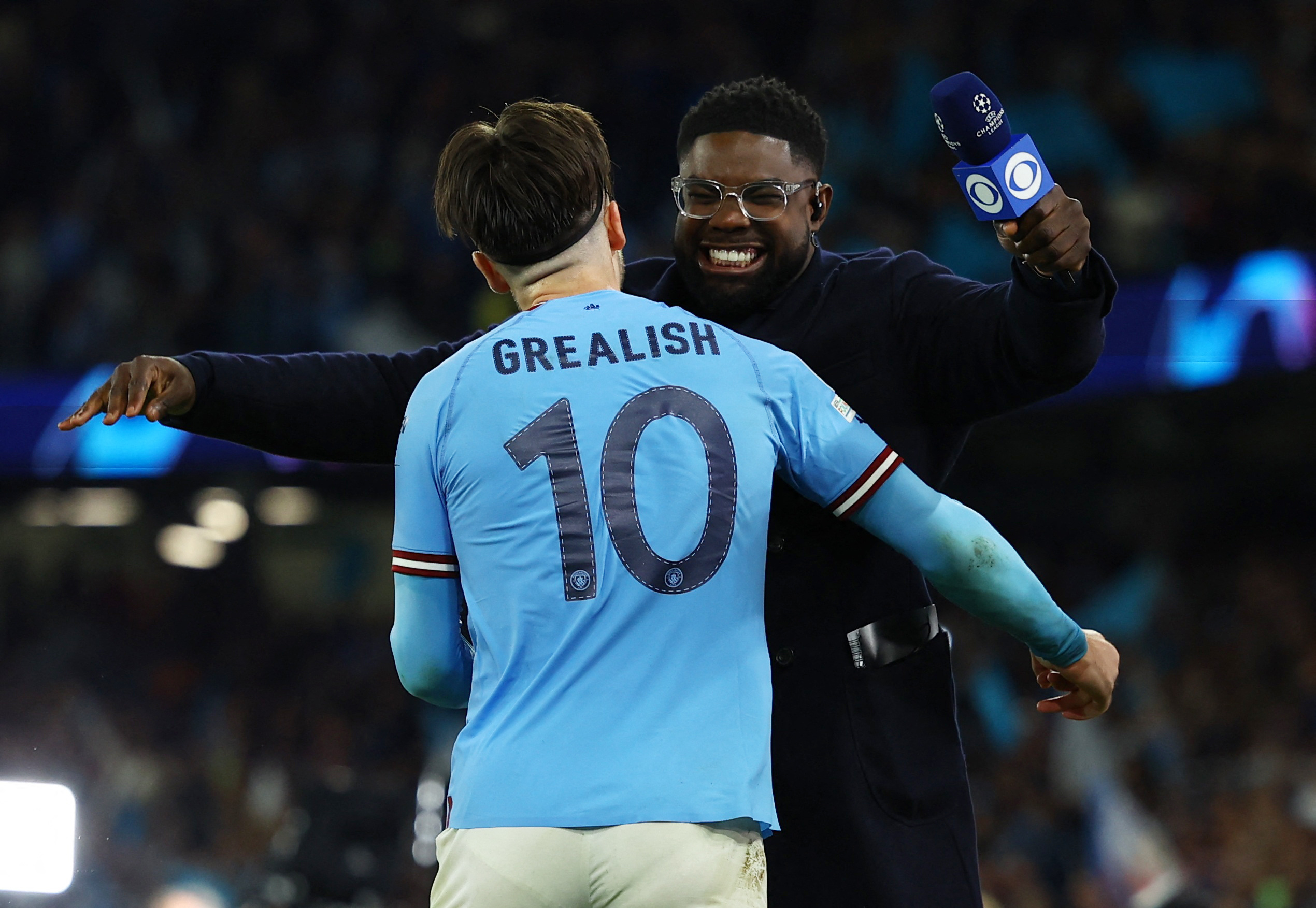VENICE.- Jeffrey’s sample Gibson at the United States Pavilion in the Venice Biennale This year it is a celebration of color, patterns and craftsmanship, evident when approaching the façade intervened with bright red pieces decorated with geometric lines of color and gigantic red podiums.
Gibson, a Mississippi Choctaw of Cherokee descent, is the first indigenous American to represent the United States alone at the Venice Biennale, the oldest contemporary art exhibition in the world. The last time Native American artists were included was in 1932.
Gibson, 52, accepts the weight of the honor, but prefers to focus on how his participation can forge greater inclusion in the future. The inclusion of overlooked communities is a key message of the Biennale’s main exhibition, titled Stranieri Ovunque – Strangers Everywhere, which is held in conjunction with around 90 national pavilions from April 20 to November 24.
The first (exhibition by an indigenous artist) is not the most important story, Gibson told The Associated Press this week before the pavilion’s opening on Thursday. The first is, hopefully, the beginning of many, many, many more stories to come.
The commissioned show, his first major solo exhibition in Europe, comes at a crucial time for Gibson. Your 2023 book An Indigenous Present introduces more than 60 indigenous artists, and has two major new projects on the horizon, a commissioned façade for the Metropolitan Museum of Art in New York and an exhibition at the Massachusetts Museum of Contemporary Art.
Gibson’s striking exhibition, titled the space in which to place me, features text in beaded sculptures and paintings taken from historical American documents, music, sermons, and proverbs to remind the viewer of the broken promises of equity throughout American history. The vibrant use of color projects optimism. In that sense, Gibson’s art is a call to action.
What I find so beautiful about Jeffrey’s work is its ability to function as a prism, to take the traumas of the past and the questions about identity and politics and reflect them in such a way that things, that realities, that become have flattened… can become these beautiful kaleidoscopes, which are joyful, festive and critical at the same time, said Abigail Winograd, one of the exhibition’s curators.
“When I see people walk through the pavilion and their jaws drop as they walk from room to room, that’s exactly what we want,” Winograd said.
Upon entering the pavilion, human-shaped sculptures and beaded corsets are adorned with dates from American legislation promising equity. The beads cascade in colorful fringes. One painting quotes George Washington writing: Liberty, when it begins to take root, is a plant of rapid growth, in geometric letters that blend into a colorful patterned background.
Gibson’s fight for freedom
By identifying specific moments in American history, Gibson said he wants to emphasize that the people fighting for equity and justice today are not the first.
This has been a line in the history of American culture. But I hope people think about why some of these things…have been revoked or haven’t come to fruition, he said.
Craftsmanship is at the center of Gibson’s art, as a challenge to past tendencies to denigrate indigenous art and as a way to confront the traumatic histories of indigenous American peoples.
There is something very healing about the cycle of creation, Gibson explained.
The pavilion’s intricate bead sculptures evoke Native American creators of the past, but without imitating them, they employ techniques that are more closely associated with haute couture to create something entirely new. Following the path of his ancestors, Gibson uses beads from around the world, including antique beads from Japan and China, and crystals from the Venetian island of Murano.
The paper works incorporate antique beads purchased from websites and garage sales into mixed media displays that honor the generations of Indigenous creators who came before him.
Still, their art incorporates many traditions and practices that go beyond its indigenous origin.
I have noticed op art, patterns and decoration. “I’ve studied psychedelia, I’ve participated in rave culture, queer culture, drag and the whole spectrum,” Gibson said.
I wouldn’t be telling the whole truth if I only chose to talk about the indigenous aspect. But my body is an indigenous body, everything is channeled through this body. So my hope is that by telling my experience, everyone else can project their own kind of intersecting and layered experience onto the world, he added.
FUENTE: AP




